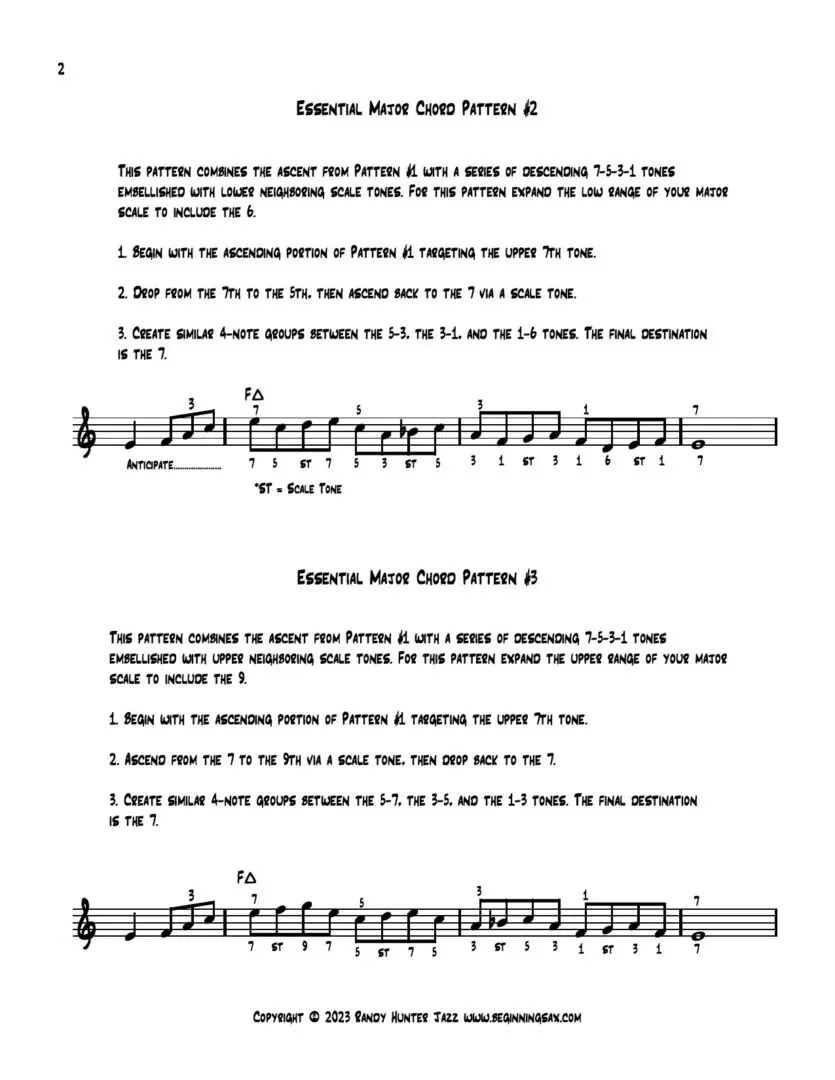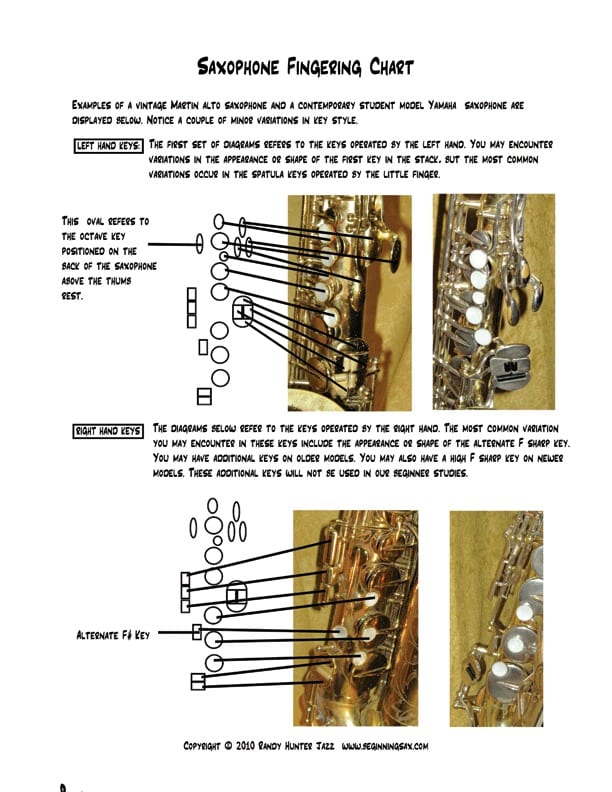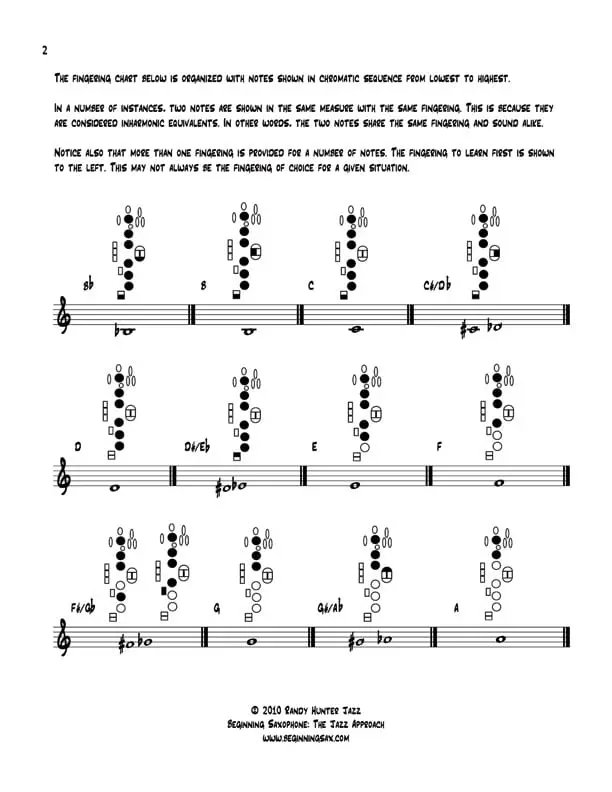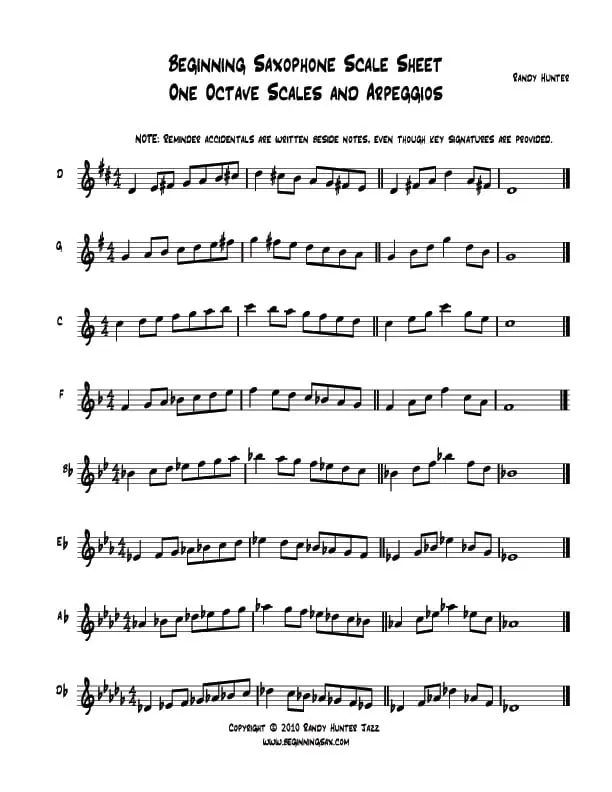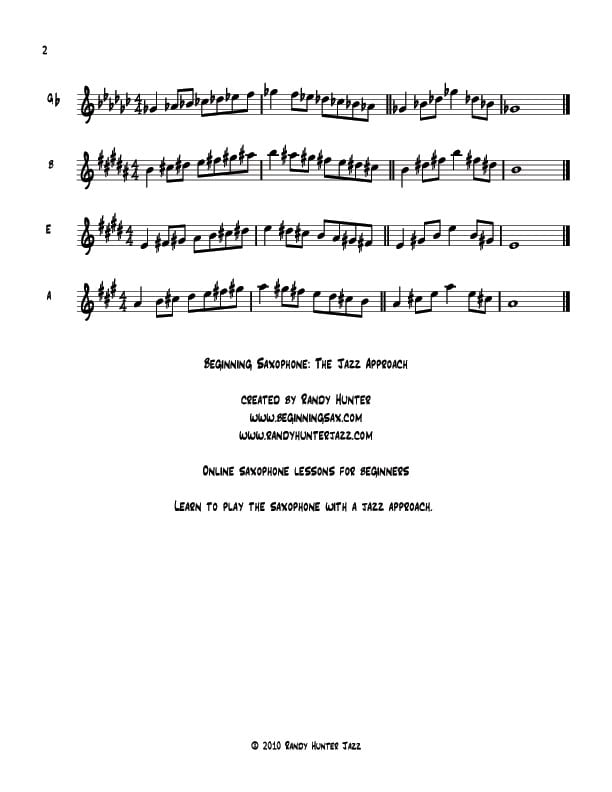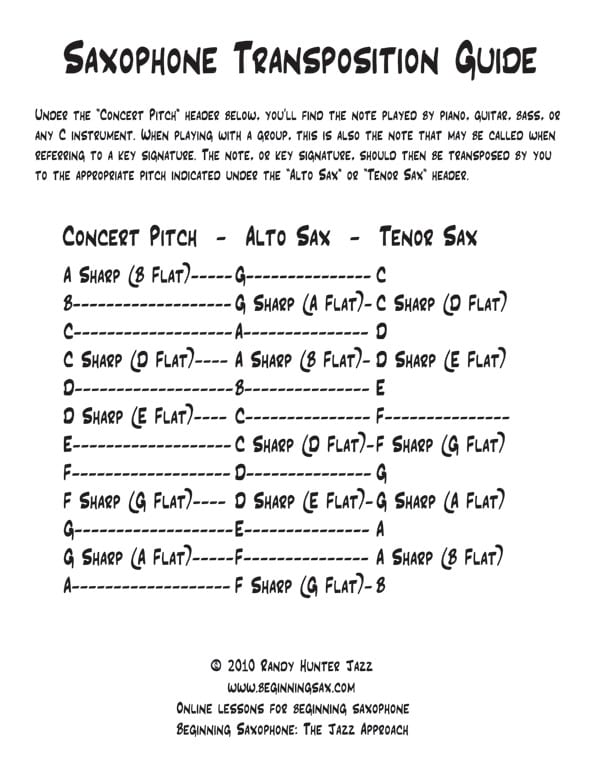Free Extras
Major Chord Essentials!
3 Must-Know Patterns
These three patterns are considered Must-Know vocabulary for all jazz musicians. Here's a link to the YouTube video.
SAXOPHONE Fingering Chart
A "Beginning Saxophone Fingering Chart" is provided on this page. While fingering diagrams are provided with new notes as they are presented in the lessons, this chart may be useful in locating specific keys. You may also wish to explore additional notes and fingerings as you learn how to play the saxophone.
SAXOPHONE Scales
Saxophone scale sheets including a one octave scale sheet with basic scales and arpeggios for beginning saxophone players plus a full-range saxophone scale sheet with extended range scales and arpeggios are provided on this page of "Jazz Saxophone for Beginners".
SAXOPHONE Transposition
The fact that saxophone is a transposed instrument is a source of confusion for most beginning & many intermediate level saxophone players. I’ll try to help sort this confusion out, but first, let me mention that transposition is a good thing.
Transposed means that a note on saxophone, whether it’s tenor, alto, baritone or soprano, sounds different than on piano, guitar, or any other concert pitch instrument. When we speak of the transposition of instruments like B flat tenor sax & E flat alto sax, we are referring to the note on piano or any concert pitch instrument that sounds like “C” on the transposed instrument. In other words, B flat on piano sounds like C on tenor sax. E flat on piano sounds like C on alto sax.
The good thing is that transposition makes it possible for us to learn one system of fingerings for notes on all saxophones, rather than a separate system for each type of sax. It also places notes on the music stave in positions that are much easier to read than if they were not transposed.
Understanding the transposition of your saxophone is extremely important, especially when it comes to playing with other instruments. This knowledge allows for the communication of key signatures and notes, and is also necessary for writing and arranging music.
When transposed from a concert pitch score, notes for alto saxophone are written a sixth above their actual sound. Notes for tenor saxophone are written a ninth, that’s an octave plus a whole-step, above their actual sound. This may be confusing, especially if you don’t have a thorough knowledge of intervals and all twelve major scales.
I must stress that it is important to pursue the ability to play all of the major scales and recognize and identify the various intervals. At the beginning and intermediate levels, however, you may need a little help in transposing from concert pitch to your saxophone. Below is a transposition chart showing the relationship between concert pitch, E flat alto (or baritone) sax, and B flat tenor (or soprano) saxophone.


